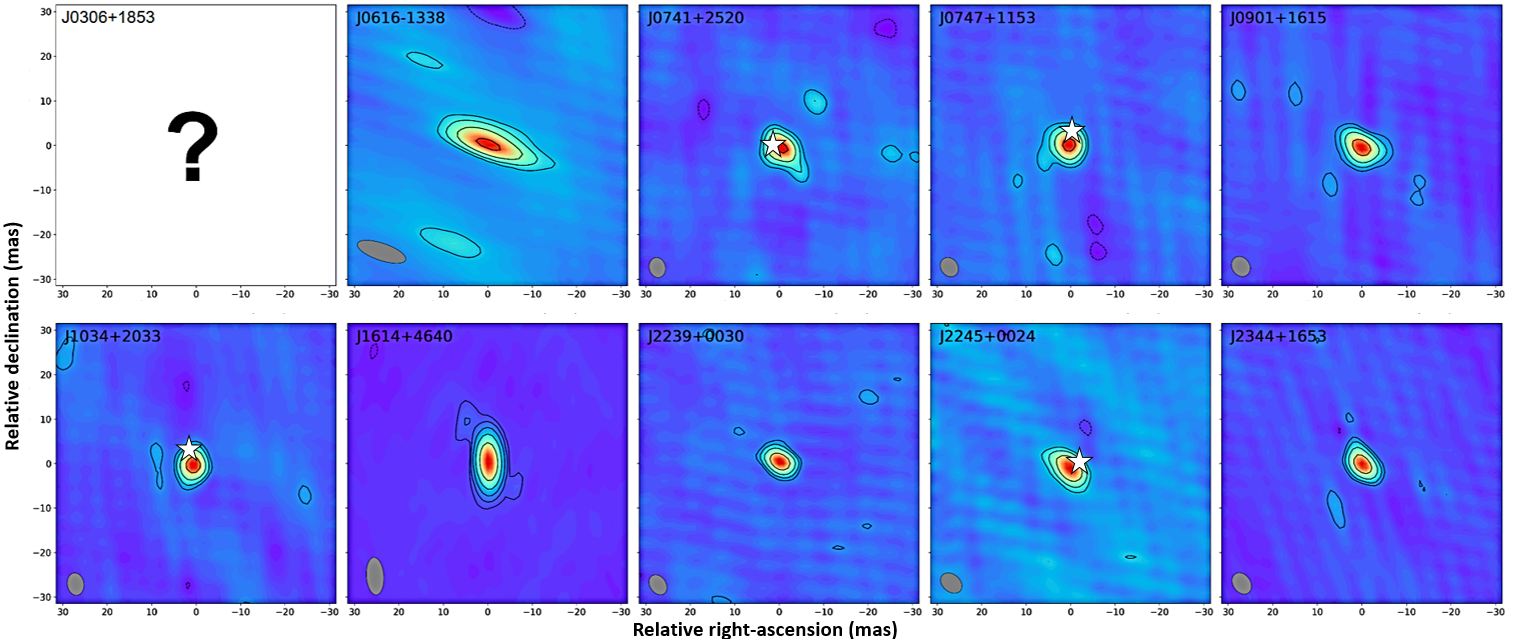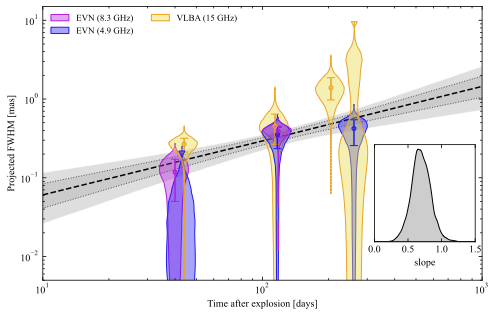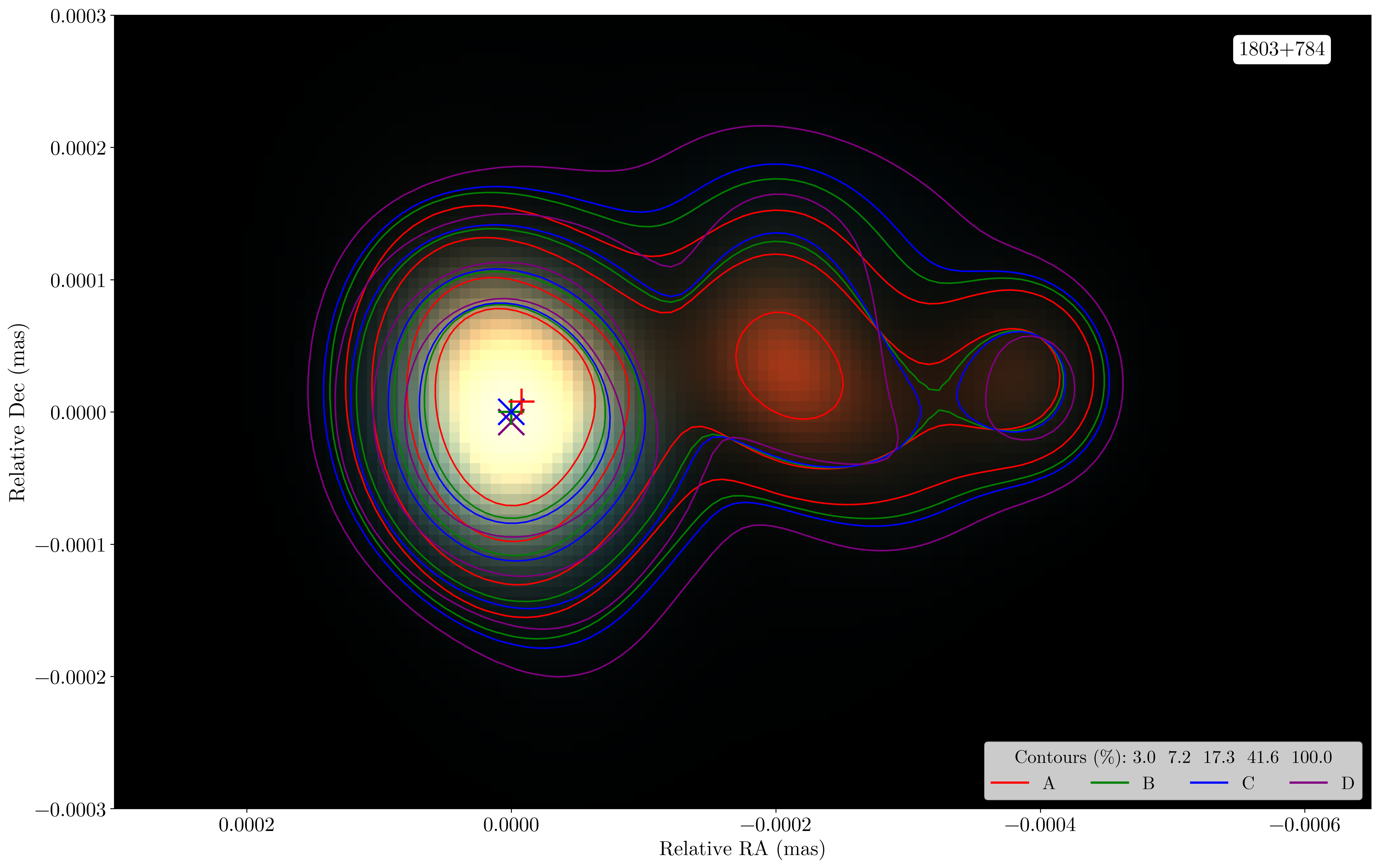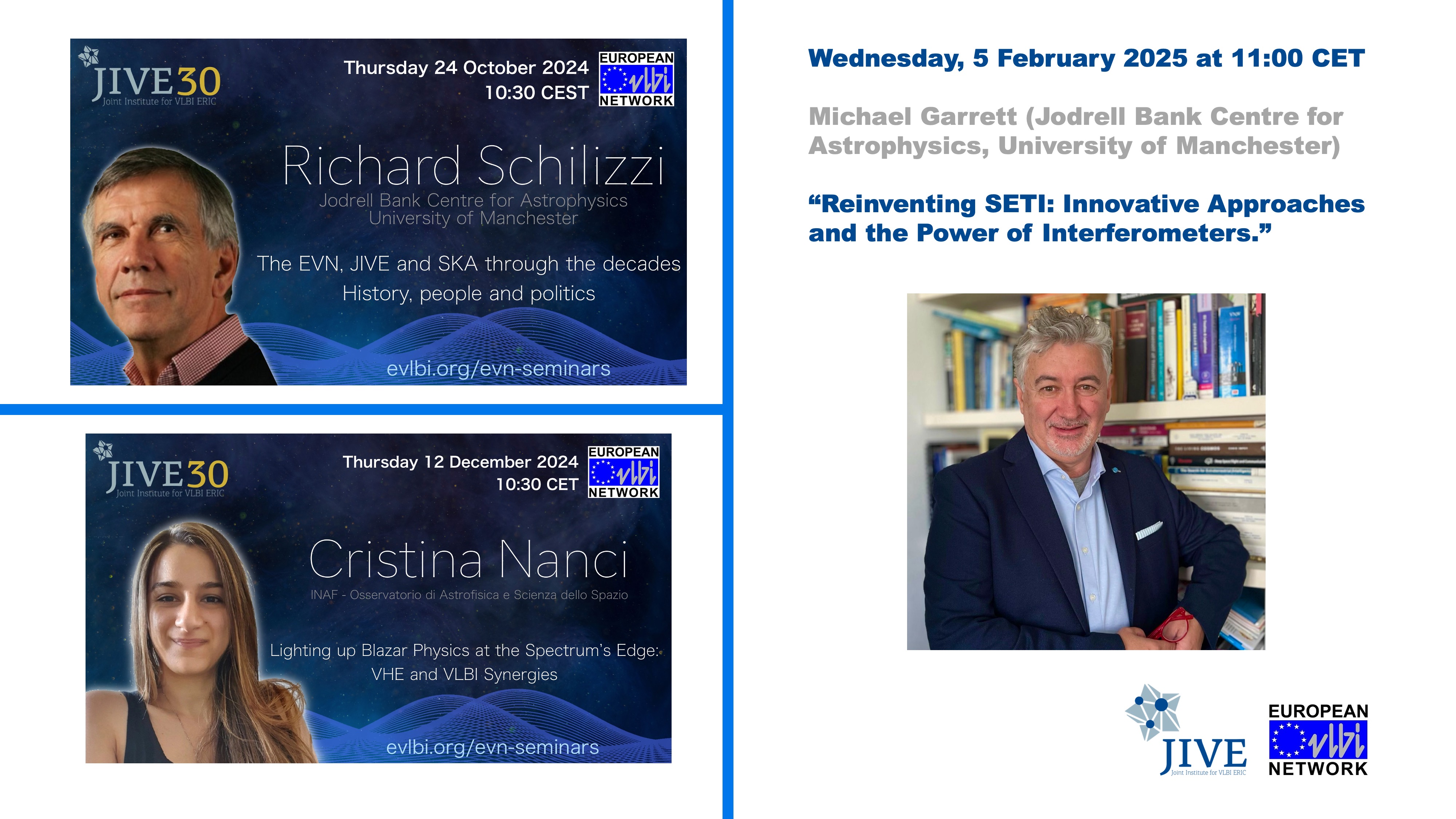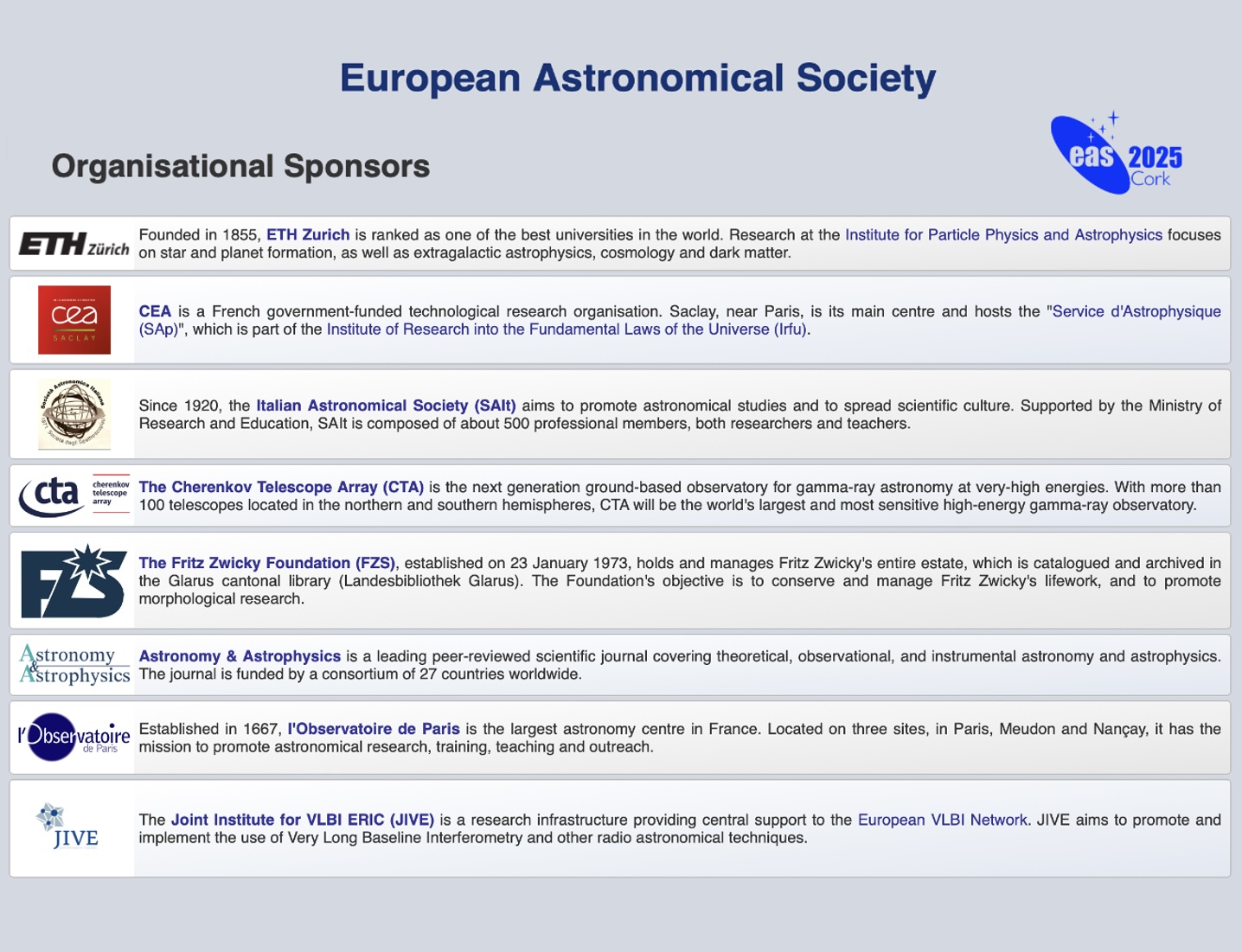
EVN/JIVE Newsletter - Edition 70 January 2025
Welcome to the January 2025 issue of the EVN/JIVE newsletter.
Happy New Year
It is a pleasure again to introduce this EVN Newsletter and to wish you all the best for 2025 not just for your scientific and technical endeavours but also for your family and friends.
The last year has been a very successful one for the EVN: the scientific demand for the EVN continues to increase, with a record number of proposals at the last deadline, and the number of very compelling proposals due to be observed is high. While the breadth of EVN science continues to widen, we also continue to see exciting scientific results on long-standing topics such as the structure of AGN jets and high-redshift objects, reported in this newsletter. The sensitivity and resolution of the EVN is clearly demonstrated in ambitious observing campaigns on the the unique gamma ray burst GRB 221009A (also reported here) - a 1 in 10,000yr event which was detected by all satellites and spacecraft with high energy transient detectors (and it saturated many), even Voyager 1 at 150 AU, and which even affected daytime VLF radio propagation on Earth. This is only the second GRB whose expansion has been tracked by VLBI.
The EVN Symposium which was held in Bonn in September was another huge success with 164 participants and an excellent range of talks and posters from a diverse range of scientists including students as well as some of the pioneers of the VLBI technique.
As the EC-funded Opticon-RadioNet Pilot (ORP) comes to an end, we had a final consortium meeting in Marseille. Key cross-domain successes which include EVN have been the development of a new universal proposal tool (Polaris); a multi-facility, multi-wavelength proposal call, collation of joint statistics and demographics across the optical and radio transnational access communities, and strategic vision papers on the importance of cross-domain collaboration and support for transnational access.
A new EC-funded project supporting multi-messenger and transient event astronomy ACME has now started and will offer limited transnational access to the EVN for certain projects.
My term as EVN CBD Chair is now ending and I would like to welcome Krzysztof Katarzynski (from the Nicolaus Copernicus University in Torun) as the new CBD Chair.
Sadly we just learned that Prof Karl Menten, a Director at the Max Planck Institute for Radioastronomy in Bonn passed away. His work had a huge impact on centimetre and sub-mm radio astronomy, including the discovery of the 6.7 GHz methanol transition, now one of the most important and valuable signposts for the earliest phases of massive star formation. His work using VLBI for precision astrometry of methanol masers led the way to their use as probes of the dynamics of our own Galaxy (through the BeSSeL project with Mark Reid, CfA), including its spiral structure, rotation rate, and the distance to the Galactic centre. (For more details see here). We send our heartfelt condolences to Karl’s family, friends and colleagues.
Simon Garrington
Jodrell Bank Observatory, University of Manchester
EVN CBD Chair

Observing proposals are invited for the European VLBI Network (EVN). Deadline: 1 February 2025, 16:00:00 UTC. The EVN facility is open to all astronomers, but currently restrictions apply to teams with PIs and/or co-Is with affiliation to institutes in Russia and Belarus. Astronomers with limited or no VLBI experience are particularly encouraged to apply for observing time. Student proposals are judged favourably. Support with proposal preparation, scheduling, correlation, data reduction and analysis can be requested from the Joint Institute for VLBI ERIC (JIVE). Check details of the call for proposals here.
EVN Support+ programme: JIVE/EVN has a programme to provide extended support to teams new to the EVN, with little or no direct VLBI experience. This includes the scheduling of the VLBI run and the VLBI-specific parts of the data reduction (including a-priori amplitude calibration and fringe-fitting). Imaging, and the interpretation of the data is the responsibility of the team. We aim to support some standard VLBI projects, evaluated by the EVN Program Committee with the highest grades. See the call for proposals for more information. For further questions please contact the Chair of the EVN PC, Zsolt Paragi (evnpc@jive.eu).
Revealing faint compact radio jets at redshifts above 5 with very long baseline interferometry
Máté Krezinger
High-redshift radio quasars (z > 5) are unique probes of the early Universe. Radio quasars are accreting supermassive black holes which eject powerful relativistic plasma jets. They are extreme luminous objects seen even from the high-redshift Universe, therefore able to provide insights into the formation and evolution of the first galaxies and supermassive black holes. Even from these distances, VLBI can reveal the compact innermost parts of the radio-emitting relativistic jets on millarcsecond (mas) scale. To date, only a dozen of the known quasars have been observed with VLBI at redshifts z > 5 (e.g. Perger et al., 2017). Read more.
A Radio Study of Persistent Radio Sources in Nearby Dwarf Galaxies: Implications for Fast Radio Bursts
Yuxin (Vic) Dong
Most extragalactic radio sources arise from recent star formation and active galactic nuclei (AGN). However, over the past decade, a unique third category has emerged: compact persistent radio sources (PRSs) that are predominately found in dwarf host galaxy environments. They were initially linked to fast radio bursts (FRBs), which are bright, millisecond-duration flashes of coherent radio emission with an enigmatic origin. The PRSs appear to fall into two distinct families: one potentially tied to intermediate-mass black holes (IMBHs) and the other to FRBs and other transient phenomena. Read more.
The expansion of the GRB 221009A afterglow
Stefano Giarratana
Long-duration gamma-ray bursts (GRBs) are powerful explosions that serve as fundamental laboratories to study the physics of ultra-relativistic jets. They are believed to mark the catastrophic death of a massive star and the subsequent formation of a spinning stellar mass black hole or neutron star. This newborn central engine may power and launch relativistic jets of ejected matter that expand and interact with the circumburst medium, producing both a forward shock and a reverse shock. The electrons at the shock fronts are accelerated to relativistic energies, producing a long-lived, multi-wavelength afterglow via synchrotron emission. Read more.
Extragalactic research based on new-generation geodetic data
Víctor Pérez-Díez
The linear polarization basis is preferably used in new-generation radio interferometers. The main reason is the wide instantaneous fractional bandwidths that can be achieved with a minimum instrumental polarization. This is the case of the VLBI Global Observing System (VGOS), the next-generation geodetic VLBI system. In order to achieve the goal of 1 mm accuracy in station position, extremely wide bandwidths are required to allow the measurement of group delays with a precision of about a picosecond. In particular, VGOS demands the use of ultra-wideband receivers covering a broad frequency range from 2 GHz to 14 GHz (Petrachenko et al. 2009). Read more.
New Insights from the Global VLBI Alliance: Edge-Brightening in AGN Jets is More common Than Previously Thought!
Jongho Park
A fraction of Active Galactic Nuclei (AGN) hosts relativistic jets that can extend to kiloparsecs and megaparsecs from the central supermassive black holes. Interestingly, jets observed in certain nearby radio galaxies, such as M87 (Walker et al. 2018), 3C 84 (Giovanninni et al. 2018), and Centaurus A (Janssen et al. 2021), exhibit an edge-brightened morphology. This is characterized by brighter jet edges compared to the jet axis region in their transverse intensity profiles. Conversely, jets observed in most other AGN, usually in distant blazars, exhibit a center-brightened morphology. Read more.
EVN Symposium in Bonn and JIVE's anniversary session
The 16th European VLBI Network Symposium and Users Meeting, hosted by the Max Planck Institute for Radio Astronomy in Bonn, Germany, from September 2–6, welcomed over 160 participants from 22 countries. The event featured 120 contributions, including 50 posters, on topics such as dark matter, galaxy evolution, black holes, jets in active galactic nuclei, and advancements in VLBI technology. Read more in the RadioNet newsletter.
JIVE's anniversary event: 30 years creating the bigger picture together
During a dedicated 90-minute session on the first day of the European VLBI Network Symposium in Bonn from 2 to 6 September 2024, JIVE celebrated its 30th anniversary, surrounded by its community. Key individuals who have shaped JIVE into what it is today reflected on its milestones and future directions. Read the full details of that memorable event.
The ACME project kicks off
Artwork: Beabudai Design
On September 16–17, the kick-off meeting for the Astrophysics Centre for Multimessenger Studies in Europe (ACME) took place in Paris. This EU-funded HORIZON-INFRA-2023-SERV-01 project, coordinated by the Centre National de la Recherche Scientifique (CNRS), aims to advance the emerging field of multimessenger astrophysics. Read more about ACME and JIVE's role in it here.
ERIS 2024
Photo: Benito Marcote
The Tenth European Radio Interferometry School concluded on October 4th, after a five-day program of engaging lectures and valuable tutorials. Read more here.
VIRAC celebrated 30th anniversary
Photo from Ventspils University webpage.
On November 8, the Ventspils International Radio Astronomy Centre (VIRAC) celebrated its 30th anniversary. Since its establishment in 1994, VIRAC has made significant contributions to research in astronomy, astrophysics, and space technology, supported by its 32-meter and 16-meter radio telescopes. Read more on the Ventspils University webpage and JIVE's webpage.
EVN seminars
Since the latest EVN newsletter, two more EVN seminars have taken place: one by Richard Schilizzi on October 24th, and another by Cristina Nanci on December 12th. You can read more about these seminars and find the links to watch them here. The next EVN seminar will be given by Michael Garrett on February 5, 2025, on the topic "Reinventing SETI: Innovative Approaches and the Power of Interferometers". Following that, Tiziana Venturi will present her seminar in March or April (exact date to be confirmed).
JIVE becomes an EAS Organisational Sponsor
JIVE joined the European Astronomical Society as an Organisational Sponsor, reinforcing their shared commitment to advancing impactful science across Europe and beyond. Read the announcement about JIVE's sponsorship in the latest EAS newsletter.
News from the ORP project
From November 5 to 7, 2024, the Consortium Meeting of the Opticon RadioNet Pilot (ORP) took place at the Palais du Pharo in Marseille, France. This is the last meeting before the project officially ends on February 28, 2025. The meeting aimed to review the ongoing and upcoming activities of the ORP until its conclusion, as well as reflect on the project’s overall achievements. Read a summary of the meeting here.
The ORP Science Talks #3 and #4 took place on September 25 and January 15, respectively. One more session is planned for January 22. The “ORP Science Talks” consist of Zoom-based events that offer researchers from the ORP community and beyond the opportunity to present their work and exchange ideas. More sessions are scheduled until the end of the project, via this Zoom link. Links to the past talks are available on the ORP website.
News from Radioblocks
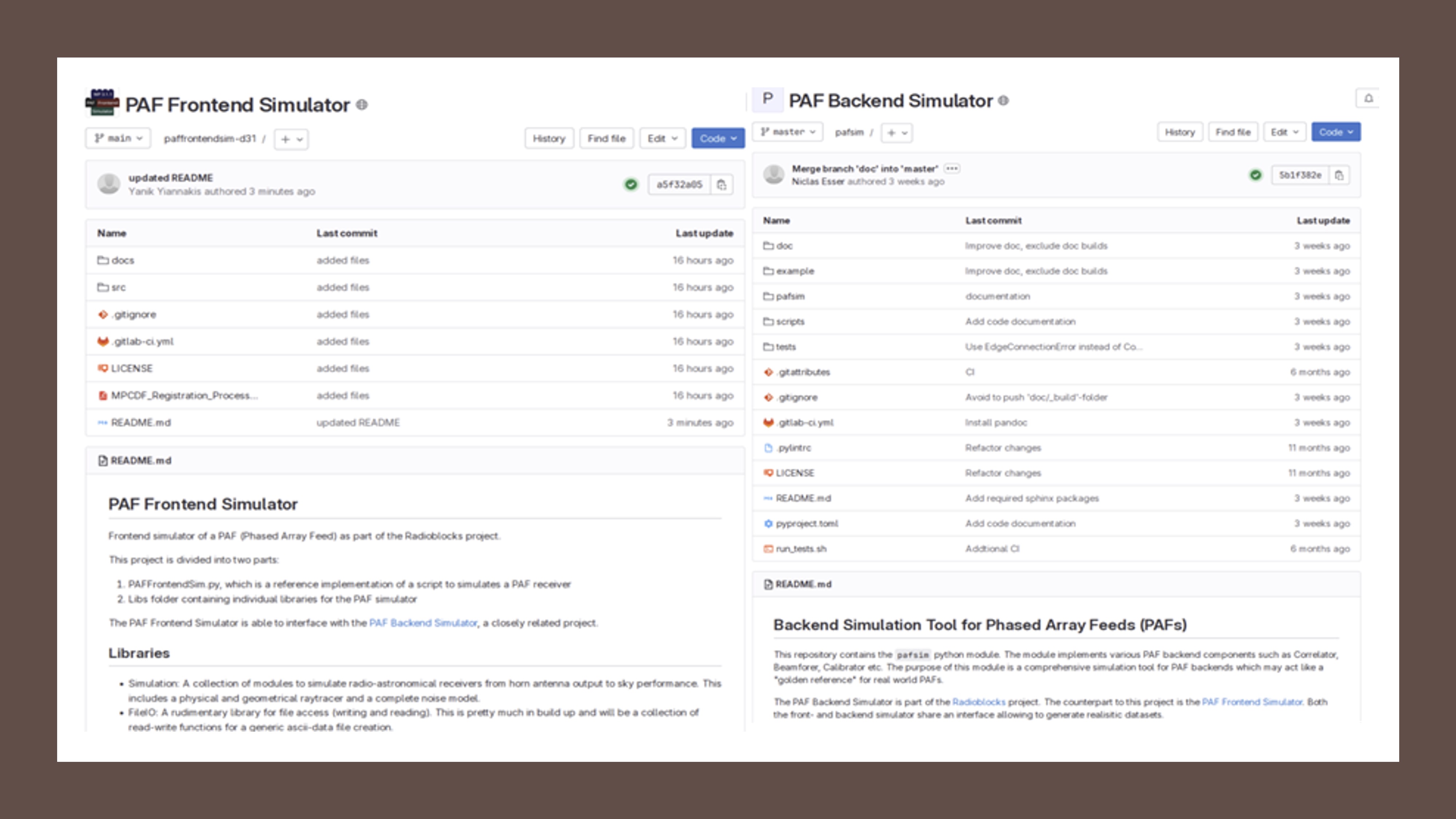
Front page of the repositories hosted on the GitLab instance of the Max Planck Computing and Data Facility.
Over the past few months, the Horizon Europe project Radioblocks has continued its efforts to build “blocks” for the next generation of radio astronomical facilities.
The work on assessing the performance of Phased Array Feeds (PAFs) is an example of recent Radioblocks results. PAFs are a crucial technology in modern radio astronomy and telecommunications, enabling highly sensitive and directional signal reception. Assessing their performance under various conditions is crucial. Now, Radioblocks offers tools to simulate both frontend and backend of PAFs. This work is led by the Max Planck Institute for Radioastronomy in collaboration with INAF and the University of Manchester. Two software repositories have been made available to the community and submitted to the European Union as deliverables of the project.
The Phased Array Feed frontend simulator is a Python and C software designed to simulate PAF frontend processing components. The Phased Array Feed backend simulator is a comprehensive Python module designed to simulate PAF backend processing components.
Another significant development is the establishment of the “Industry Advisory Board”. This board comprises representatives from both the industry and the project team, facilitating the exchange of knowledge between academia and industry, preparing for future fabrication, and assuring the long-term exploitation of Radioblocks results, even beyond the field of radio astronomy.
Finally, Radioblocks has also welcomed two new partners: Heidelberg University and Rhodes University. The expertise of these institutions is a valuable addition to the project's work, particularly in the area of data processing.
- ACME Science Meeting, “The gravitational wave sky and complementary observations”. Abstract submissions are open until 20 January 2025. At Toulouse, France, from 7 to 11 April 2025.
-
SKAO Science Meeting 2025, “A new era in Astrophysics: Preparing for early science with the SKAO”. At Görlitz, Germany, from 16 to 20 June 2025.
-
ASTRON/JIVE Summer Research Programme. At ASTRON, Dwingeloo, the NL, for 10-12 weeks starting from the first week of June 2025. Application deadline: 31 January 2025, 23:59:59 CET. For more information, read here.
-
JIVE VLBI School 2025. At JIVE, the NL, and the University of Pretoria, SA, from 15 to 19 September 2025. For more information, click here.
EVN/JIVE newsletter editorial team: Agnieszka Slowikowska (JIVE Director), Zsolt Paragi (JIVE Head of User Support), Ioanna Kazakou (JIVE Communications Officer).
For any enquiries about the newsletter, please contact communications@jive.eu.
